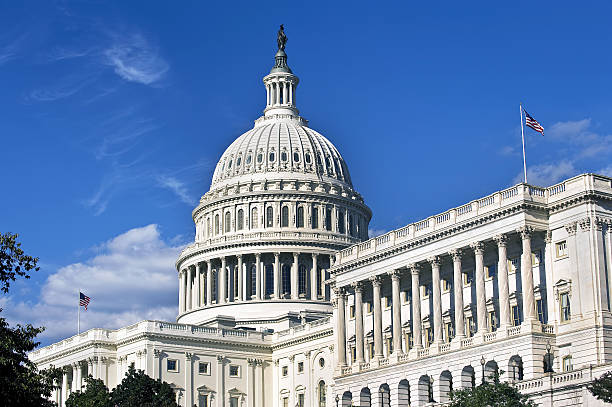[Reuters Analysis] US fiscal folly could create big, beautiful debt spiral: Klement


By Joachim Klement
LONDON, July 3 (Reuters) - The U.S. tax and spending bill passed on July 3 is expected to add more than $3 trillion to the country’s deficit over the next decade. If the current debt trajectory continues unabated, it could set off a slow motion debt spiral that could endanger the Federal Reserve’s independence.
The sobering long-term debt projections of the Congressional Budget Office may actually understate the likely impact on U.S. debt-to-GDP levels of President Donald Trump's "One Big Beautiful Bill".
The CBO based its estimate on the assumption that temporary increases in government spending and tax cuts will sunset at a projected date. But this new budget bill, which extended previous tax cuts and other measures, has shown that this sunset often never arrives.
Thus, the long-term projections in the U.S. Treasury’s annual financial report may be more realistic since they assume the current rate of government spending will continue indefinitely. In the Treasury forecast, the U.S. debt-to-GDP ratio is projected to increase to over 200% in 2050 compared to the CBO’s estimate of around 145%.
Scarier still, the Treasury forecasts that the U.S. debt-to-GDP ratio will reach 535% by 2100 if current spending plans continue.
Proponents of tax cuts argue that they boost GDP growth and thus will slow the rise in debt-to-GDP, but the CBO estimates that the House Bill will only increase real GDP by an average of 0.5% over 10 years or 0.04% per year relative to the CBO’s January 2025 projections. The Tax Foundation estimates that the Senate Bill will boost GDP growth by 1.2% in the “long run”.
That hardly makes a difference compared to an expected debt increase totalling almost 10% of GDP.
RISING RISK PREMIUMS
If today’s debt dynamics persist, the risk premiums in the U.S. Treasury market will almost certainly climb over the long run.
Economists Martin Ademmer and Jamie Rush have analysed the drivers of 10-year Treasury real yields since 1970. They concluded that investors typically demand more risk compensation as the U.S. deficit increases, especially when there is competition from an ample supply of safe assets globally. Thus, Treasury yields rise.
Their analysis concludes that these two factors together lifted the natural 10-year real yield for Treasuries by 1.3 percentage points between 2005 and 2023. If the deficit projections for the next decade are realized, this trend should continue.
With all this in mind, it was notable that U.S. Treasury Secretary Scott Bessent said last week that he would not boost long-term Treasury bond sales given today’s high interest rates. Since the pandemic, the average duration of U.S. government debt has declined significantly as the Treasury has favoured bills over longer-term instruments in an effort to keep interest expenses under control.
One reading of Bessent’s comments is that the Treasury is concerned about the country’s ability to continue servicing its long-term debts if it borrows at today’s elevated yields, a message that could push Treasuries’ risk premium even higher, making long-term borrowing even less tenable.
GREEK TRAGEDY
This reminds me of a similar episode in which a heavily indebted country faced a sudden spike in its already large deficit. As investors lost trust in the country’s ability to pay back its debt, long-term yields rose, which in turn forced the government to issue debt at shorter and shorter maturities. This signalled to the market that the government would struggle to pay the existing debt, and this pushed long-term government bond yields even higher. The country’s debt entered a doom loop.
The country in question: Greece after the 2009 financial crisis.
To be clear, I do not expect the U.S. to experience a similar implosion. There are crucial differences between the U.S. and Greece that should prevent this, not least the ability of the U.S. to devalue the dollar and inflate away some of its debt. Greece, as a euro zone member, had no such flexibility.
But the new U.S. budget increases the possibility that the U.S. could face a similar debt drama, only in slow motion. If long-term Treasury yields remain higher for longer, the Treasury is apt to continue shortening the duration of its debt. This, in turn, could create a vicious cycle by making government interest expenses more volatile, further imperiling U.S. fiscal health and making longer-term debt even riskier.
OFF RAMPS
There appear to be three main off ramps for the U.S.
One: politicians could become fiscally prudent and significantly reduce the deficit to a sustainable level. This seems unlikely given both parties’ recent track records.
Two: the Treasury could impose capital controls to artificially increase demand for Treasuries. As I have written previously, this move would likely spell the end of the dollar as the main global reserve currency.
Three: the Fed could create artificial demand for long-term Treasuries by scooping up bonds itself – that is, restarting quantitative easing – to keep yields low. The danger with this form of QE, however, is that it represents fiscal dominance, where the central bank loses control over monetary policy because of imprudent government actions.
How such a development would play out is impossible to predict, especially when it involves a global superpower, but it’s fair to assume the Fed won’t want to find out.
(The views expressed here are those of Joachim Klement, an investment strategist at Panmure Liberum, the UK's largest independent investment bank).
Enjoying this column? Check out Reuters Open Interest (ROI), your essential new source for global financial commentary. ROI delivers thought-provoking, data-driven analysis of everything from swap rates to soybeans. Markets are moving faster than ever. ROI can help you keep up. Follow ROI on LinkedIn, and X.
U.S. debt-to-GDP projections

Change in 10-year U.S. Treasury risk premium since 2005

U.S. Treasury duration has been falling since the pandemic

Greece inadvertently shortens duration








